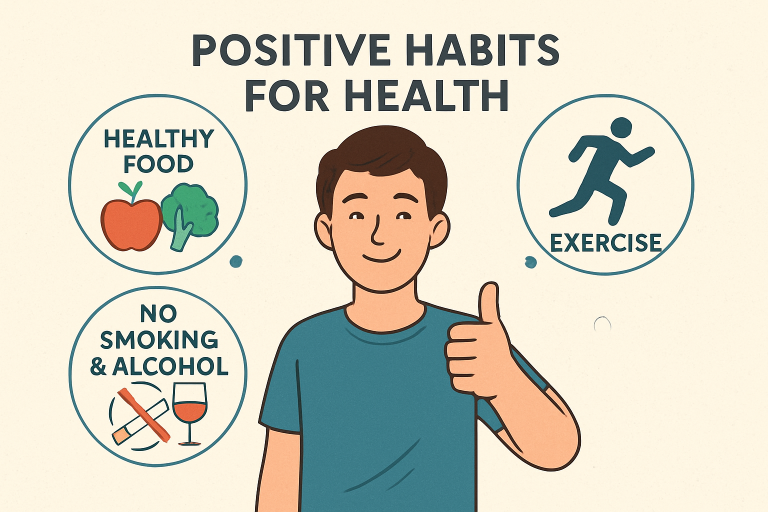Table of Contents
Introduction
Erectile dysfunction (ED) is a common yet complex condition, affecting millions of men worldwide. Knowing the different approaches to ED treatment arms individuals with the knowledge necessary to choose the path that best suits their needs and health profiles. Access to diverse and effective strategies ensures that those experiencing ED can regain quality of life and sexual confidence.
From lifestyle changes and medications to devices and evolving therapies, the variety of ED treatment approaches underscores the importance of a personalized, informed plan developed in collaboration with healthcare providers. Below, each method is explored in detail to guide the journey toward enhanced sexual health and overall well-being.
Lifestyle Modifications
Lifestyle adjustments are a foundational step for many managing ED. Studies show that men who incorporate regular aerobic exercise—such as brisk walking, cycling, or swimming—for 30 to 60 minutes several times a week see meaningful improvements in erectile function. This routine enhances blood flow, supports cardiovascular health, and reduces inflammation, all of which are crucial factors for healthy erectile function.
Diet is another cornerstone, with evidence suggesting that consuming more fruits, vegetables, and whole grains while limiting processed foods helps optimize vascular and nerve health. Maintaining a healthy weight further supports optimal hormonal and blood vessel function. Additionally, limiting alcohol consumption and quitting smoking are essential, as both habits negatively impact circulation and nerve signaling critical for erections.

Oral Medications
Oral medications, particularly phosphodiesterase type 5 (PDE5) inhibitors, are often first-line therapies for ED. Medications like sildenafil (Viagra), tadalafil (Cialis), and vardenafil (Levitra) work by enhancing nitric oxide’s effect, relaxing smooth muscle tissue, and increasing blood flow to the penis. These drugs are generally effective and are tailored to individual needs in terms of dosage and expected onset of action.
It is essential to consult a physician before beginning any oral ED medication since certain health conditions or medications—for instance, nitrate-containing drugs for angina—may cause dangerous interactions. Doctors will assess cardiovascular health and overall suitability to ensure these medications are used safely and effectively.
Topical Treatments
Topical therapies, including alprostadil cream, provide another route for those who cannot or do not want to take oral medications. This prescription cream is applied directly to the penis, causing an erection within 5 to 30 minutes that typically lasts up to two hours. Topical alprostadil offers a localized effect and can be appealing for individuals seeking an alternative to pills or injections.
As with any medication, topical treatments can cause side effects, most commonly slight burning or redness at the application site. Following the healthcare provider’s directions and communicating any side effects are vital steps toward optimizing outcomes with this therapy.
Injectable Therapies
Injectable medications, such as alprostadil, papaverine, or phentolamine, deliver treatment directly into the erectile tissue. Known as intracavernosal injections, this approach has demonstrated high efficacy, particularly for men who do not respond to oral drug therapy. Patients are carefully instructed on self-injection techniques to ensure safety and minimize discomfort.
Potential side effects can include pain at the injection site or, rarely, prolonged erections (priapism). Regular follow-up with a healthcare provider is strongly recommended for anyone using injectable therapies to monitor progress and adjust doses as necessary.
Vacuum Erection Devices
Vacuum erection devices (VEDs) are non-invasive tools that aid in achieving an erection by creating suction. The vacuum draws blood into the penis, and a constriction ring maintains the erection. These devices are a valuable solution for men who prefer non-pharmacological options or who cannot tolerate systemic therapies.
While VEDs are effective for many, some users may find them physically unwieldy or experience temporary bruising or discomfort. Nonetheless, VEDs generally have a low risk of side effects and can be an excellent choice for the right candidate.
Penile Implants
For those not achieving success with other treatments, surgical options like penile implants may offer a permanent solution. During the procedure, inflatable or malleable devices are placed inside the penis, allowing control over the timing and duration of erections. Satisfaction rates for penile implants are high, with many users reporting restored confidence and spontaneity.
As with any surgery, there are risks, such as infection or mechanical problems with the device, as well as a recovery period. It is essential to discuss expectations and potential complications thoroughly with a urologist before undergoing this treatment.
Emerging Therapies
Ongoing research is expanding the landscape of ED therapies. Low-intensity shockwave therapy (LiSWT), for example, utilizes targeted sound waves to stimulate blood vessel growth and enhance blood flow. Although some early studies suggest benefits, more clinical trials are needed to confirm its long-term safety and efficacy.
Stem cell therapy is another promising investigational approach aimed at repairing damaged erectile tissue. Although results from early trials are encouraging, these interventions remain experimental and are only available in research settings or specialized clinics. As always, individuals should pursue such therapies under the close supervision of a qualified medical team.
Psychological Counseling
Psychological issues like anxiety, depression, and stress significantly impact erectile performance and overall sexual health. Counseling—whether one-on-one or with a partner—can address the emotional root causes of ED, improve communication, and foster better intimacy. Cognitive-behavioral therapy (CBT) is a proven modality that helps individuals develop healthier thought processes and coping mechanisms, thus reducing the psychological barriers to achieving or maintaining erections.
With a range of options from lifestyle modifications and medications to advanced procedures and psychological support, men facing erectile dysfunction are not alone. Partnering with a healthcare provider ensures that the right treatment plan is selected, tailored to individual needs, and optimized for the best possible outcomes.

